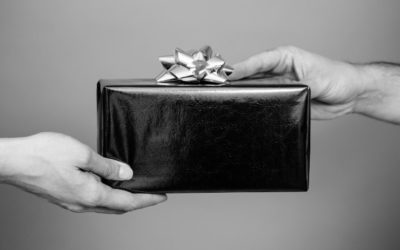Editor Note: Finances aren’t the only thing people can struggle with in life…weight is a very common hurdle people face. I have had my own battle with my weight throughout my education and training years. Below is Leif’s perspective on how he avoided the “Dad Bod” and what that has to do with finances. Enjoy this WCI Saturday Post as originally seen on Physician on Fire.
On September 30, 2020, I weighed in at 166.6 pounds. Three and a half weeks later, the digital scale read back 156.6 pounds after a steady and consistent weight loss of about three pounds per week. I know for a fact that what I did won’t work for everyone, but I’d like to detail how I lost 10 pounds with a few straightforward lifestyle changes.
Like saving and investing, it was simple but not necessarily easy.
The last time I deliberately lost weight was two years ago when I was tipping the scales in the mid-170s, which put me back at about the heaviest I’ve ever been.
The changes I made back then led to an 8-pound weight loss over the course of a sober October. I applied those same changes in October of 2020, and when combined with the other healthy living choices I’ve been making in this post-retirement lifestyle, the weight fell off even faster.
How I Lost 10 Pounds in 24 Days (and What That Has To Do With Personal Finance)
I’ve always been a lanky guy with a slender build. According to height and weight charts, as a six-footer with a small frame, my ideal body weight is 149 to 160 pounds.
That may sound awfully skinny, but now that I’m back in that range, I’d say it looks and feels about right. It reflects a BMI of 21.
Keep in mind that I’m the opposite of big-boned. I can wrap my hand around the other wrist and touch my thumb to my pinky finger. Those big-faced wristwatches look ridiculous on me.

The Changes I Made to Lose 10 Pounds
In October of 2020, I made two major lifestyle changes.
- Limited my caloric intake to 2,000 calories a day
- Consumed no alcohol
2,000 Calories a Day
Technically, I averaged nearly two million calories a day, but for some reason, we’ve abbreviated kilocalories to “calories,” so I’ll stick with the accepted nomenclature.
As I did in 2018, I tracked my daily caloric intake with an app and website called FatSecret. Any food I looked for, including most name brand items, already exists in their database, making daily food entries a breeze.
They’ve got breakfast, lunch, and dinner sections, plus a place to enter snacks. I haven’t routinely eaten breakfast in several years, and the 2,000 calorie threshold had me limiting snacks, but I did have something between meals nearly every day.
I found that a lunch of 600 to 800 calories and a dinner of 800 to 1,000 calories (with 150 calories of that being my daily 14 ounce serving of skim milk) was enough to satisfy my stomach without feeling overly full. That left me 200 to 600 calories for dessert and/or snacks.
I would guesstimate that this was a 20% to 30% reduction as compared to my normal daily intake that has kept my weight steady in the mid-to-upper 160s that I’ve been living at for most of the last two years since my last intentional weight loss two years earlier.
Yes, I felt hungry at times. I first learned to live with hunger as a junior in high school making weight at 112 for wrestling season. I’ve also dabbled with intermittent fasting over the last couple of years and rarely eat anything before 11 a.m.
What I’ve learned is that, for me, hunger pangs come and go. It’s not like a full bladder that will only become more full and painful when ignored. Hunger pangs can subside even when I don’t treat them with a food bolus. That knowledge is a powerful realization.
No Alcohol
Once again, I gave up alcohol for a Sober October. My wife and I have done this each of the last three years. It would have been nearly impossible to limit my intake to 2,000 calories a day if I allowed myself to have a couple of beers in the evening.
We didn’t drink at all in October. In the other eleven months, we normally abstain from alcohol for one week, and in 2020, I’ve limited myself to 60 servings of alcoholic beverages per month. Most IPAs are close to 1.5 servings and a pint of double IPA is more like 2.5 servings, with the standard serving being a 12 oz. of 5% ABV beer, 5 oz. of 12% ABV wine, or 1.5 oz. of 40% spirits (all multiply to 60).
Since one serving of beer is about 150 calories, and I usually consume something close to my self-imposed limit of 60 over a span of up to 24 days in a month (after subtracting a sober week), that’s about 9,000 calories that I didn’t consume over this weight-loss stretch.
The Role of Exercise
The not-so-secret secret to weight loss is to eat less and exercise more. When I lost 10 pounds, I ate less and continued to exercise, but actually a little bit less than I had before.
Throughout this time, I continued a daily routine of 100 pushups, 100 situps, 40 air squats, and 60 “furniture dips.” I’ve been doing some variation of these exercises since the spring of 2020.
I also continued a habit of walking at least a mile daily. At the beginning of the month, I was running regularly, usually with my wife and kids.
For most of this 24-day stretch, my wife was out of town and then my kids got sick with the common cold (testing Covid-negative, thankfully). So running was out for a week or so, and then the cross-country season ended for my oldest, so I didn’t actually run after the first week of the month.
Nevertheless, I have a fairly active lifestyle. It’s one that allows me, along with what seems to be a reasonably high basal metabolism, to normally consume closer to 3,000 calories a day without gaining weight.
It’s not that I’m incapable of gaining weight. My first visit to Michigan as a 29-year old resident, I indulged in my wife’s family’s Polish cooking and gained a pound a day for a week. I’ve done the same on cruise ships, and now I try to use a little restraint when visiting family or hitting the all-you-care-to-eat buffets.
Willpower and Discipline?
When we accomplish something we’ve set out to do, we like to congratulate ourselves and take credit for having some special traits that others are lacking or for using them more effectively. I know I’ve felt that way, at least.
I don’t know that I deserve the credit that I’ve given myself, though. I think what I’ve viewed as willpower or discipline can be more accurately described as putting a plan and system in place.
You can use this framework with achieving many goals, and two of the most common goals that people set are to lose weight and to save more money.
What follows are a few things that I’ve done to mimic willpower and discipline when it comes to losing weight and saving money.
Make Decisions in Advance
I decided months in advance that I was not going to drink alcohol in October. It’s not a decision I have to contemplate nightly. It’s already been decided, and that makes it a lot easier to abstain. The Physician Philosopher talked about this in a recent podcast on the subject.
But there’s this Halloween party… Doesn’t matter. Dress up, go, and have fun. Yeah, you might have 20% less fun, but you’re 100% less likely to make an ass of yourself (unless you’re dressed up as a donkey) and you’ll wake up with pride and no hangover on All Saints Day when you’ve met your goal of a Sober October.
[As an aside, my wife and I decided that starting in 2021, we would start our Sober Octobers a day early and end it on Halloween. It’s a festive holiday, especially in non-pandemic times.]
I decided before the month started that I would limit myself to 2,000 calories a day.
If FatSecret tells me I’ve had 1,975 calories and I want a bowl of ice cream, there’s no decision to make. No ice cream. Similarly, if you’ve decided to do intermittent fasting with an 8-hour window in which to consume your calories, there’s no bowl of ice cream after putting the kids to bed.
When it comes to money matters, if you’ve decided to invest $5,000 a month into a taxable brokerage account, that’s what you do. You may have to remind yourself of why you made that decision and what your long-term goals are, but when the decision’s already been made, you shouldn’t be thinking about other uses for that money.
Automate
It’s easier for your actions to align with your decisions when you’ve got systems in place to help make them compatible.
With alcohol, taking beer out of the fridge, locking the liquor cabinet, or hiding the wine makes it easier to avoid. It’s tough to drink something you don’t see, can’t access, or can’t find.
When limiting caloric intake, you can prepare and properly portion meals in advance. Many popular snacks come in 100 calories packages.
It might make sense not to have some unhealthy and addictive foods around. Just like I can’t enjoy a cold beer if it’s not in my fridge, I can’t plow through most of a box of Chicken in a Biskit if the box is not in my pantry.
Automation can be hugely impactful in the world of personal finance. You can automate that $5,000 a month investment to your taxable brokerage account. You can set up your bills to paid automatically so that you never incur any late fees.
If your goal is to max out all of your tax-advantaged accounts like a 401(k), 403(b), 457(b), Roth IRA, and/or HSA, you can automate all of those investments, too.
Setting these things up to happen automatically greatly improves your odds of success.
Educate
Educating yourself on these topics helps reinforce your “why.”
It’s not difficult to learn about the dangers of overdrinking. Watch a few episodes of “Intervention” if you care to see how ugly and depressing it can be. Sadly, many of the subjects of that show, particularly the alcoholics, were no longer alive by the time their episode aired.
I think the downsides of obesity are pretty well-known, and we have a new one in 2020 with the way Covid-19 has impacted the obese population. It’s much easier to enjoy retirement without Type II Diabetes and debilitating arthritis in the knees from carrying all that extra weight.
It’s also helpful to educate yourself on what foods are good for you and which foods are not so good. Some foods, like eggs, can be on either list depending on what you believe or which study you read, but most foods will fall on one side or the other.
If nothing else, you can look at the nutrition label and get a good idea of the breakdown of what you’re about to put into your body. When I started tracking calories, I switched from snacking on carrots with peanut butter to carrots with hummus. The hummus has much less fat and about 1/3 the calories per tablespoon.
When you take the time to educate yourself on matters of investing and personal finance, you’ll be pleasantly surprised how simple it can be do invest for your future effectively. I recommend starting with a three fund portfolio and branching out from there if you wish.
This entire website is devoted to educating you on all matters personal finance. View all posts to see — you guessed it — all posts, along with a list of categories at the top.
Track With the Right Tools
If your goal is to drink no alcohol, you don’t really need any tools to count to 0.
With dietary goals, there’s a lot more to track. I step on a digital scale every night when home and record my weight on a spreadsheet. I’m tracking other daily goals like the exercise goals and language learning on the same line of the spreadsheet.
If you’re going to track calories or any other metric, you’ll need to have a way of doing so. The app I use is one of many, and it may not be the best one. It’s the one I found a couple of years ago and it suits my needs. Here’s a look at my data from a week in this 24-day stretch.

I don’t believe I set those goals, so I assume they’re the default plan, but they are customizable.
By the way, I haven’t mentioned what I ate during this timeframe, and I’ll tell you that I did nothing special. I ate what I normally eat, but less of it. My registered dietitian of a wife was out of town nannying for her cousin’s baby boy for most of this stretch, so the quality of my diet actually suffered a bit.
Some of the things that I did eat:
- Salads
- Bacon Cheeseburgers
- Salmon
- Birthday Cake & Ice Cream
- Broccoli
- Pepperoni Pizza
- Breakfast for Dinner (bacon, waffles, fried eggs, and tator tots)
- Carrots and hummus
- Potato chips
- Tacos
- Yogurt
- Pork Tenderloin
- Potatoes
- Triscuits & cheese
- Pretzels
- Tilapia
- Grilled chicken
- Fajitas
- Chocolate
- Sour Patch Kids
- Apples
- Rice
- Tuna poke
- Pulled pork
- Shrimp
- Garlic Bread
- Milk
- Ham, Cheese, and Pepperoni sandwiches
In other words, nothing out of the ordinary for me. I’m a meat and potatoes guy with a wife that makes sure I eat something green every day.
One thing that does stand out in my mind is the fact that with the exception of a warm apple cider, the only liquid calories I consumed came from my daily tall glass of milk with dinner. My diet was caffeine-free, I drank no carbonated beverages of any kind, and I saved my calories for the solid foods that I enjoy.
The FatSecret app makes it easy to input everything on that list above and pretty much any food you can come up with. If the app doesn’t have the particular brand of something you ate, you could input the info from the nutrition label. I took the shortcut of selecting something similar if the exact product was not in their database.
Tracking is also very useful when trying to reach financial goals, and there are tools that can assist you here, as well.
If you have spending goals, there are tons of free spreadsheets and low-cost budgeting tools out there. For a couple of years, I tracked my spending with Mint and then Personal Capital. The process is mostly automated once you grant read-only access to your credit card and banking accounts.
Personal Capital also does an excellent job with investment tracking. You can see your portfolio’s returns, track your net worth, analyze investment fees, track your asset allocation, and more. It’s a free service, and they make their money by offering optional advisory services.
I don’t use their advisory services, but I’ve tracked my portfolio with the free software and app for the last six-plus years.
It Worked for Me.
So that’s how I lost 10 pounds in 24 days. I used many of the same principles that I used to become financially independent in 10 years after finishing residency.
I realize that what worked for me may not work for you. I’m simply sharing my experience, and yours may be completely different, even if you follow the same guidelines and practice the same habits that I did.
One might call it discipline or willpower or whatever, but I think it’s more a matter of setting goals and putting systems in place to make reaching those goals all but inevitable.





0 Comments